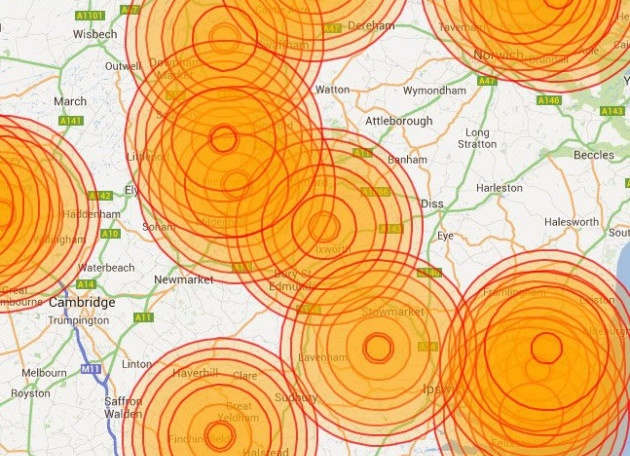The National Archives has released new documentation from the Cold War detailed suspected targets for nuclear attacks by the Soviet Union. These targets include over one hundred cities used as military bases. Commanding officers in military intelligence believed that some of these bases were more at risk than others, and compiled lists of the most likely nuclear targets which were only given to Cold War officers in charge of defense.
Many of the bases selected for inclusion in the list were chosen due to their prominence in terms of various military concerns.For instance, large naval bases and command centers, such as the one at Plymouth. There were also a number of Royal Air Force bases suspected to be at risk, such as the one at St. Magwan. Not all potential Cold War targets were major bases, however. A prime example of a target that many would not have anticipated taking a position on the list is Salcombe, a town which has become a popular site for people to take getaway vacations. The list does not include all potential targets, but does include most of the primary ones, the Western Morning News reports.
The expansive list contains nearly forty cities, twenty-five command centers, almost forty bases used by the Royal Air Force and United States Air Force, and six sites used by the British Navy. One of the most prominent Cold War targets was naturally London, which people thought would be attacked using multiple nuclear explosives. Other major cities around Great Britain made the list as well, expecting to be the target of several megatons worth of bombs.
Had these predictions come to pass, the devastation would have been unequalled by anything the Allies could have served up as a response. The five megaton explosions estimated to land on these cities during the Cold War would have been several hundred times more explosive than the bombs used against Japan during WWII. Such destruction would have severely limited the abilities of the United States and the United Kingdom to respond with a strong counterattack.
The Cold War was a time of uncertainty, but military officials tried their best to formulate plans in the case of an emergency. Compiling lists of expected targets was but one precautionary measure taken to help ensure full preparedness in the event of a nuclear strike by the Soviet Union. The documentation now released by the National Archives provides some insight into this aspect of Cold War planning.
